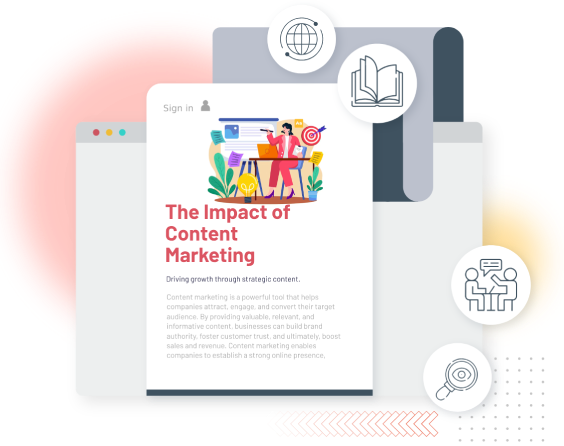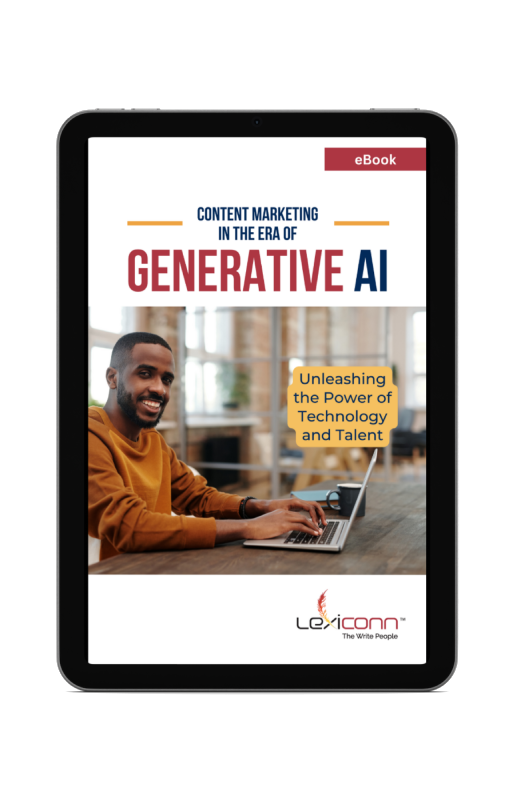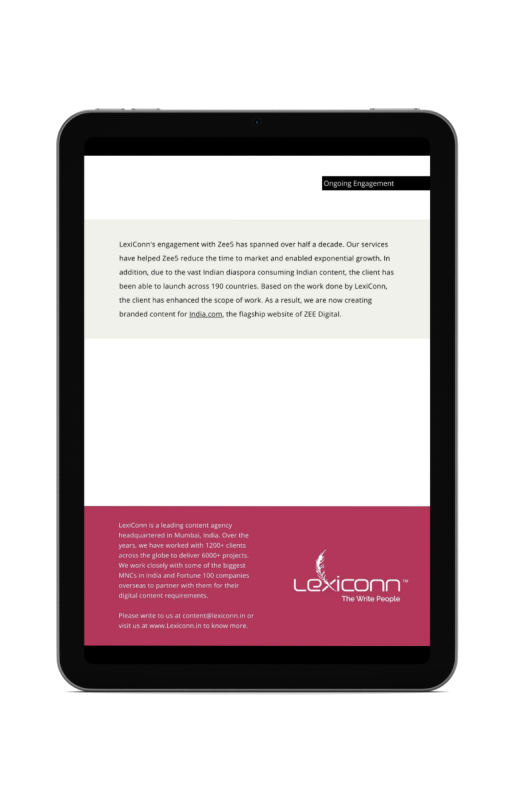
As we navigate through 2025, the landscape of content marketing is undergoing a significant transformation. Business leaders must stay abreast of emerging trends to maintain a competitive edge. This comprehensive guide delves into the future of content marketing, highlighting key trends and strategies that will shape the industry.
Artificial Intelligence (AI) has become a cornerstone in modern content marketing strategies. Its ability to analyze vast datasets and generate human-like content has revolutionized the way businesses approach content creation.
AI-driven tools are now capable of producing personalized content at scale. By analyzing user behavior and preferences, these tools can craft tailored messages that resonate with individual consumers. This level of personalization enhances user engagement and fosters brand loyalty.
Moreover, AI aids in predictive analytics, allowing marketers to anticipate content performance and adjust strategies accordingly. By leveraging machine learning algorithms, businesses can identify trends and consumer needs before they become apparent, positioning themselves as proactive industry leaders.
However, the integration of AI is not without challenges. Ensuring the ethical use of AI, maintaining content authenticity, and addressing data privacy concerns are paramount. Business leaders must navigate these issues carefully to harness AI's full potential responsibly.
In an era where consumers are inundated with content, authenticity stands out as a differentiating factor. Audiences are increasingly seeking genuine connections with brands, favoring those that demonstrate transparency and ethical practices.
User-generated content (UGC) has emerged as a powerful tool in this regard. Encouraging customers to share their experiences fosters a sense of community and trust. Brands like Lush have successfully leveraged employee-generated content to showcase behind-the-scenes operations, adding a layer of authenticity to their marketing efforts.
Transparency extends beyond content creation to business practices. Consumers are demanding clarity regarding product sourcing, manufacturing processes, and data usage. Brands that openly communicate their practices are more likely to earn consumer trust and loyalty.
Short-form video content has seen exponential growth, driven by platforms like TikTok, Instagram Reels, and YouTube Shorts. These bite-sized videos cater to the decreasing attention spans of modern consumers, delivering engaging content in a concise format.
Studies indicate that short-form videos generate higher engagement rates compared to traditional content forms. This trend is particularly prominent among younger demographics, with a significant percentage of Gen Z consumers influenced by short videos in their purchasing decisions.
For business leaders, investing in short-form video production is becoming imperative. These videos offer a cost-effective way to showcase products, share customer testimonials, and humanize the brand. Collaborating with influencers on these platforms can further amplify reach and impact.
Relying solely on traditional platforms is no longer sufficient. The digital landscape is fragmented, with audiences dispersed across various channels. To maximize reach, businesses must adopt a diversified content distribution strategy.
Emerging platforms and technologies, such as virtual reality (VR) and augmented reality (AR), are gaining traction. These immersive experiences offer novel ways to engage audiences, allowing them to interact with products or services in a virtual environment.
Additionally, the resurgence of forums and community-based platforms provides opportunities for brands to engage in meaningful conversations with their audience. These spaces foster loyalty and offer valuable insights into consumer preferences and pain points.
With increasing concerns over data privacy, consumers are becoming more cautious about the information they share. Regulatory frameworks are evolving, imposing stricter guidelines on data collection and usage.
Business leaders must prioritize ethical marketing practices, ensuring transparency in data handling and obtaining explicit consent from users. Building robust data protection measures not only complies with regulations but also enhances brand reputation.
Moreover, adopting a customer-centric approach that respects user privacy can differentiate a brand in a crowded marketplace. Providing value through relevant content without infringing on privacy fosters trust and long-term relationships.
Employee-generated content (EGC) is gaining momentum as brands recognize the value of showcasing their internal culture and expertise. Content created by employees offers authentic insights into the company's values and operations, resonating with audiences seeking transparency.
Brands like Fenty Beauty and Marc Jacobs have effectively utilized EGC to humanize their brand and build deeper connections with consumers. By empowering employees to share their experiences and expertise, companies can enhance credibility and foster a sense of community.
Implementing an EGC strategy involves encouraging employees to create and share content, providing guidelines to ensure brand alignment, and recognizing their contributions. This approach not only enriches the content pool but also boosts employee engagement and morale.
Beyond content creation, AI plays a pivotal role in content optimization. Machine learning algorithms analyze user interactions to determine the most effective content types, posting times, and distribution channels.
AI-driven tools can A/B test various content formats and headlines, providing real-time feedback on performance. This data-driven approach enables marketers to refine their strategies, ensuring content resonates with the target audience and achieves desired outcomes.
Furthermore, AI enhances search engine optimization (SEO) efforts by identifying relevant keywords and predicting search trends. This ensures content remains discoverable and aligns with evolving consumer search behaviors.
Consumers are increasingly aligning with brands that demonstrate a commitment to social and environmental causes. Purpose-driven content is no longer a niche strategy but a fundamental aspect of brand identity. Businesses that authentically engage in social responsibility initiatives, sustainability efforts, and ethical business practices will stand out in 2025.
Consumers expect brands to take a stand on important societal issues. However, authenticity is key—performative activism can backfire, leading to a loss of trust. Companies must ensure that their purpose-driven content aligns with their core values and business practices. For instance, brands in the fashion industry promoting sustainability should actively adopt eco-friendly manufacturing practices rather than just talking about them.
Moreover, storytelling plays a crucial role in purpose-driven marketing. Sharing real stories of impact, whether through employee initiatives, customer experiences, or partnerships with non-profits, makes content more relatable and credible.
Interactive content is becoming a powerful tool to boost engagement and audience participation. In 2025, business leaders must explore interactive formats such as quizzes, polls, live Q&A sessions, and gamified experiences to make their content more dynamic.
Consumers prefer content that allows them to participate rather than passively consume. Tools like Instagram’s interactive stickers, LinkedIn polls, and interactive blog features encourage users to engage directly with the brand. This engagement also provides valuable insights into customer preferences and behaviors, which can be leveraged for future marketing strategies.
Additionally, Augmented Reality (AR) and Virtual Reality (VR) will play an increasing role in interactive content marketing. For example, beauty and fashion brands have already introduced AR features that allow customers to virtually try products before purchasing. As technology advances, other industries will adopt similar approaches to enhance user experience.
With the rise of smart speakers and voice assistants like Alexa, Google Assistant, and Siri, voice search is transforming how consumers find content. Optimizing content for voice search is no longer optional—it’s a necessity for businesses looking to maintain visibility in the digital landscape.
Unlike traditional text searches, voice search queries are more conversational and question-based. This means brands must focus on natural language processing (NLP) when structuring their content. Long-tail keywords such as "How AI is shaping content marketing" and "Future content trends for business leaders" are particularly effective for voice search optimization.
Additionally, AI-powered chatbots and conversational AI will become essential for customer engagement. Businesses should integrate AI-driven chat solutions to provide instant support, guide users through content, and answer frequently asked questions, improving customer satisfaction and retention.
Email marketing remains one of the most effective digital marketing strategies, but in 2025, personalization will be the defining factor in its success. Generic email campaigns are no longer effective—consumers expect hyper-personalized content tailored to their interests, behaviors, and past interactions.
AI-powered email marketing tools now enable businesses to send dynamic content that adapts based on user engagement. Personalized subject lines, customized product recommendations, and behavior-triggered emails enhance engagement rates significantly.
Moreover, brands must prioritize interactive email elements, such as embedded videos, countdown timers for limited-time offers, and AI-driven product suggestions. The more engaging and tailored an email campaign is, the better its performance.
With Google phasing out third-party cookies and increased data privacy regulations worldwide, brands must adapt their data collection strategies. First-party data—information collected directly from customers via website interactions, email subscriptions, and direct engagements—will become the primary resource for targeted marketing.
Business leaders must invest in building strong customer relationships to encourage data sharing. Interactive surveys, gated content (such as whitepapers and exclusive reports), and loyalty programs incentivize users to voluntarily provide data. Transparency in data usage is also critical—brands must clearly communicate how customer data will be used to improve their experience while ensuring compliance with privacy laws like GDPR and CCPA.
Additionally, AI-driven predictive analytics will help marketers leverage first-party data more effectively, allowing for deeper audience segmentation and precise targeting.
Community-building is becoming an essential part of content marketing. Rather than focusing solely on customer acquisition, brands must prioritize creating loyal, engaged communities. These communities foster organic word-of-mouth marketing, increase brand advocacy, and improve long-term customer retention.
Brands like Notion, Duolingo, and Tesla have successfully built dedicated communities where users share insights, feedback, and experiences. In 2025, business leaders must explore platforms like Discord, Reddit, and niche social media groups to nurture brand communities.
User-generated content (UGC) will play a key role in community-led growth. Encouraging customers to share testimonials, create content around brand experiences, and participate in exclusive community-driven events fosters deeper engagement and brand loyalty.
While short-form content like videos and social media posts are on the rise, long-form content remains vital for thought leadership and in-depth engagement. Business leaders should continue to invest in well-researched blogs, whitepapers, and reports to establish credibility and provide value to their audience.
High-quality long-form content improves SEO rankings, increases dwell time, and enhances domain authority. Topics like "How AI is shaping content marketing" and "Future content trends for business leaders" require in-depth analysis, and brands that produce insightful content in these areas can position themselves as industry leaders.
Additionally, repurposing long-form content into bite-sized formats—such as social media snippets, podcast discussions, or video summaries—ensures maximum reach across multiple platforms.
As AI continues to evolve, predictive analytics will play a crucial role in shaping content strategies. AI-driven tools can now analyze historical data, market trends, and audience behavior to predict which types of content will perform best.
Marketers can leverage AI to automate content distribution, optimize publishing schedules, and tailor content recommendations to specific audience segments. For example, AI can predict the best time to post content based on user activity patterns, ensuring maximum visibility and engagement.
Furthermore, AI-driven content curation allows brands to personalize website experiences dynamically. AI-powered recommendation engines, like those used by Netflix and Spotify, can be applied to content marketing to serve users the most relevant articles, videos, or products based on their preferences.
As we enter 2025, the content marketing landscape is becoming more dynamic, data-driven, and personalized. Business leaders must embrace AI, prioritize authenticity, and diversify content formats to stay ahead in a competitive market. From purpose-driven marketing to interactive content and predictive analytics, the future of content marketing is centered on innovation and audience engagement.
For businesses looking to navigate these changes effectively, partnering with a content strategy expert like LexiConn can provide the expertise and insights needed to adapt and thrive. By staying ahead of content marketing trends, leveraging AI-driven strategies, and embracing the future of content, brands can build a robust digital strategy that resonates with their audience and drives long-term success.
Book a FREE 30-minute website audit consultation today. Visit www.lexiconn.in or email [email protected] to get started.



I have read and accept the Privacy Policy
Read More